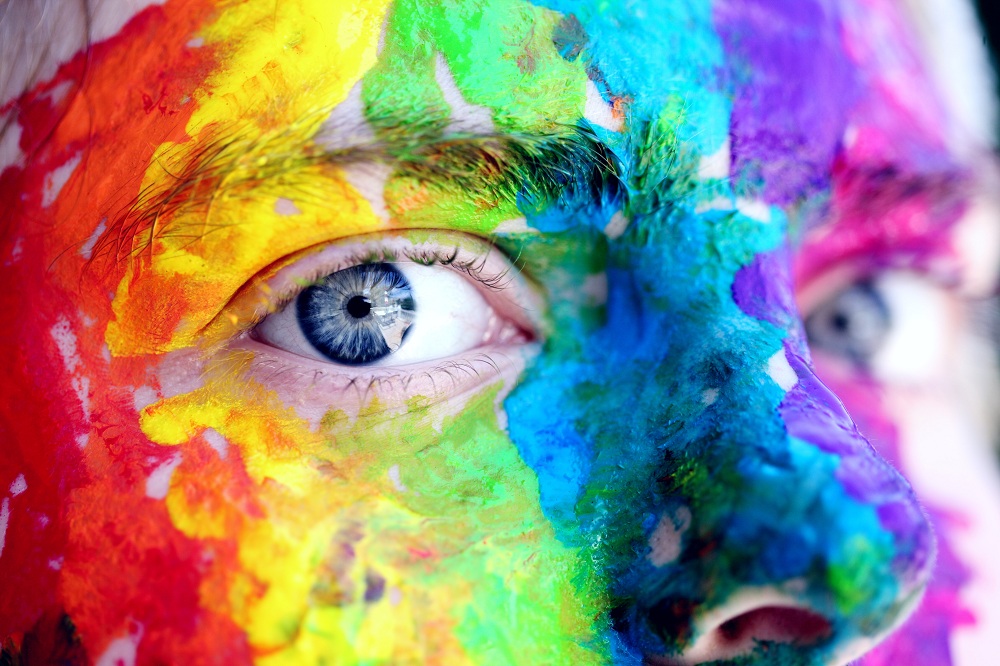Marketing is becoming more important as companies and organizations realize the power of effective marketing strategies. It’s estimated that small businesses spend around 7-8% of their revenue on marketing. There are also countless ways to reach potential customers and clients, from traditional methods like print advertising and television commercials to modern social media campaigns and influencer marketing. However, one increasing trend is art marketing.
Art has been around for a long time and has always been a way to express ideas, emotions, and beliefs. In recent years, businesses have started incorporating art into their marketing strategies to connect with customers more deeply. This can be seen in companies commissioning original artwork for their products or using art installations to create unique experiences for potential customers. Here’s a deeper look into art marketing, some art marketing ideas you need to consider, and how you can create beautiful visuals for your marketing campaign.
I. Importance of Art in Business Marketing
It’s indisputable that art-driven marketing ideas are more interesting than traditional methods. Incorporating art into marketing can help businesses stand out and create a lasting impression on their target audience because people remember visual content more than anything else. Art is also an effective way to convey a brand’s message, values, and personality visually appealingly. This is especially important in today’s digital age, where attention spans are short, and consumers are bombarded with numerous advertisements daily.
A. Enhancing Brand Visuals With Art
Art is a powerful tool for enhancing brand visuals, uniquely expressing a company’s identity and core values. By incorporating art into branding, a company can strike a chord with its audience, evoking emotions and creating a memorable experience.
Art can add depth and sophistication to a brand’s visual representation, whether through a thought-provoking mural, an innovative product design, or a captivating logo. This strategic integration of art can differentiate the brand in a crowded market and foster a deeper connection between the brand and its consumers, ultimately driving customer loyalty and brand affinity. Furthermore, art-infused visuals can help the brand’s content stand out in the digital world, increasing engagement on social media platforms, and enhancing the overall effectiveness of the marketing strategy.
B. Art as a Marketing Tool
In marketing, art is not merely an aesthetic add-on but a potent communication and persuasion tool. The evocative power of art can be harnessed to narrate a brand’s story, eliciting emotions and spurring actions that pure data or facts alone might not achieve.
For instance, a well-executed piece of visual art — be it an ad, a poster, or an Instagram post — can capture the essence of a promotional campaign and resonate with audiences on a deeper level. Art in marketing can also take on interactive forms, such as immersive art installations or experiential pop-ups, providing an unforgettable customer experience that reinforces brand recall.
Moreover, collaborations with artists can bring a fresh perspective, infusing creativity and innovation into marketing campaigns. Art offers a refreshing alternative in a world saturated with generic advertisements, allowing brands to engage their audiences in meaningful and aesthetically pleasing ways.
Lastly, the impact of art-centric marketing on audience engagement and brand recognition is profound. Art can invoke emotional responses, leading to more meaningful and powerful engagements between the brand and the audience. It establishes a unique brand identity and voice that can set a company apart from its competitors, making it more recognizable and memorable in the minds of consumers.
Artistic marketing content is more likely to be shared and engaged with on social media platforms, reaching a wider audience and increasing the company’s visibility. This can enhance brand recognition and foster a sense of community and belonging among the audience members, who may feel more connected to the brand due to its creative and aesthetic appeal.
Moreover, art-centric marketing can boost brand credibility, demonstrating a commitment to quality and innovation. This can heighten consumer trust and loyalty, leading to more positive brand associations and, ultimately, a stronger brand reputation. Therefore, the benefits of integrating art into marketing strategies go beyond mere aesthetics; it can significantly contribute to the overall success of a brand’s marketing efforts.
II. Creating Visually Appealing Advertisements
Advertising is an essential part of marketing, and creative advertising techniques are vital in capturing the audience’s attention and communicating the brand’s message effectively. Art can be used to create visually appealing advertisements that stand out from the clutter and resonate with audiences.
A. Artistic Approaches to Ad Design
Implementing artistic approaches to advertisement design can effectively capture the audience’s attention and hold their interest for longer periods. One such method is color psychology, where different colors evoke certain emotions and reactions among viewers, creating a more impactful ad experience. For instance, bold and vibrant colors can stir excitement and energy, while softer hues often resonate with feelings of calm and tranquility.
Another artistic approach is to incorporate typography into ad design. Different fonts and typefaces can express various moods and tones, contributing to the ad’s overall message and aesthetic appeal. They can also guide the viewer’s attention to key elements of the ad, ensuring that the intended message is conveyed effectively.
Utilizing illustration and graphic design is also a popular artistic approach in ad design. These elements can simplify complex information, making it more digestible and engaging for the audience. They also allow brands to exhibit creativity, setting their ads apart from conventional, text-heavy designs.
Moreover, storytelling can be a powerful tool in ad design. By creating a narrative within the advertisement, brands can connect with their audience more personally, making the ad more memorable and impactful.
B. Engaging Campaigns Through Art
Art-based engagement campaigns are far more effective than traditional methods at capturing audience attention. By incorporating interactive elements like gamification or augmented reality, brands can enhance the customer experience and drive higher engagement rates. These campaigns also allow consumers to interact with the brand and create user-generated content, further amplifying the campaign’s reach. Furthermore, innovative brand visuals with art can attract media attention, improving the campaign’s success and effectiveness.
C. Collaborations with Artists
In the realm of marketing, collaborations with artists are becoming increasingly popular. Artists bring a fresh, innovative perspective to marketing endeavors, allowing brands to break away from conventional strategies and create visually stimulating and emotionally evocative campaigns. These collaborations can take various forms, from commissioning an artist to create unique artwork for a campaign, to partnering with an artist for a limited-edition product line. This elevates the brand’s visual aesthetics and adds a layer of authenticity, as each artwork uniquely expresses the artist’s creativity. More importantly, it piques the interest of the consumers, as a brand’s association with an artist often conveys a sense of exclusivity and prestige.
III. Art Marketing in the Digital Age
As businesses navigate the digital age, the intersection of art and marketing has become increasingly pronounced. With platforms like Instagram and Pinterest, which prioritize visual content, art has become essential to digital marketing strategies.
A. Art and Social Media Marketing
Social media platforms provide an excellent opportunity for brands to showcase their artistic side. Brands can share visually compelling content that captures their brand identity and engages their audience. Moreover, social media allows for greater creative liberty, enabling brands to experiment with different formats such as videos, GIFs, and other visual media. This can significantly enhance audience engagement and increase brand visibility and reach.
Brands can also leverage social media to collaborate with artists and share their creative process or behind-the-scenes content, providing a more intimate connection with the audience. Furthermore, through user-generated content campaigns, brands can encourage consumers to showcase their artistic talents by creating content related to the brand, effectively turning them into brand ambassadors.
B. Art and Influencer Marketing
Another popular trend in marketing is influencer marketing, where brands collaborate with social media influencers to endorse their products or services. As consumers become increasingly skeptical of traditional advertisements, influencer marketing provides a more authentic and relatable approach to promoting a brand. By collaborating with influencers known for their artistic talents, brands can effectively showcase their products in a visually appealing and creative way. This creates a more positive association with the brand and can drive higher engagement rates among the influencer’s followers.
IV. Compelling Brand Visuals And Strategies
Brand visuals are integral to any marketing campaign, and incorporating art can significantly enhance their impact. However, to succeed, brands must have a well-defined strategy that aligns with their brand identity, values, and target audience.
A. Building a Brand Aesthetic
Establishing a brand aesthetic is critical to creating captivating brand visuals. A brand aesthetic refers to the overall look and feel that a company presents to its audience, which is typically consistent across all marketing platforms and channels. A brand aesthetic is more than selecting a color palette and a logo; it encompasses the style of imagery, typography, and the overall visual language used to communicate the brand’s values and personality.
Art plays a significant role in building a brand aesthetic, allowing for a unique and memorable visual identity that sets the brand apart from its competitors. This can range from the art style used in advertisements and promotional materials, the visual themes presented across social media platforms, and even the design of the company’s products and packaging.
A well-defined brand aesthetic creates a cohesive and consistent customer experience, fostering familiarity and trust over time. It also helps to attract and retain the target audience, as customers are more likely to associate positive experiences and emotions with a brand that presents a visually appealing and consistent aesthetic.
To build a powerful brand aesthetic, businesses must deeply understand their target audience, their brand values, and the message they wish to convey. It is also important to keep the brand aesthetic flexible and adaptable to current design trends while maintaining the core elements that define the brand’s identity.
B. Visual Story Telling With Art
Visual storytelling is important for brands that aim to connect with their audience on an emotional level. By incorporating art into brand visuals, companies can effectively tell a story and create a deeper connection with their audience. Visual storytelling involves strategically using art and design elements to communicate a brand’s message in a way that resonates with the audience. This can include using imagery and graphics to convey emotions, creating compelling narratives, and utilizing metaphors and symbolism to evoke deeper meaning.
Art allows for a more creative and engaging approach to visual storytelling, as it can convey complex ideas and emotions simply yet effectively. By combining art with storytelling techniques, brands can create visually stunning campaigns that capture their audience’s attention and leave a lasting impression.
Businesses must stand out in today’s fast-paced digital world, where consumers are bombarded with countless ads and messages daily. Incorporating art into marketing strategies enhances the visual appeal of brand visuals and allows for a more emotional and authentic connection with consumers. As technology advances, businesses must continue to harness the power of art in their marketing efforts to stay relevant and impactful in the ever-evolving market.
FAQ Section
Q1: How can art enhance brand identity and recognition?
Art can contribute to a brand’s identity by creating a unique and visually appealing aesthetic that distinguishes it from competitors. Moreover, art can evoke emotional responses in viewers, making the brand more memorable and creating a deeper connection with the audience. This enhances brand recognition and establishes a strong brand identity.
Q2: What are some cost-effective ways to incorporate art into marketing strategies?
There are several cost-effective ways to integrate art into your marketing strategies. User-generated content campaigns, for instance, encourage consumers to create and share their artistic content related to your brand, providing you with free, authentic, and engaging content. Collaborating with emerging artists can also be more cost-effective than hiring high-profile artists, and can offer fresh, innovative perspectives. Digital design tools and platforms can be used to create quality graphics and animations without significant investment.
Q3: Which artistic mediums work best for digital marketing campaigns?
Digital marketing campaigns benefit from a variety of artistic mediums. Graphic design and illustration effectively create visually appealing and memorable digital ad designs. Video is another powerful medium for digital marketing campaigns, particularly on social media platforms, which favor video content due to its high engagement rates. Animation and motion graphics can add more interest to your digital marketing assets, making them more dynamic and engaging.
Q4: How can businesses measure the success of art-centric marketing efforts?
The success of art-centric marketing efforts can be measured by tracking various metrics. These include increased brand awareness, as evidenced by more social media mentions, an uptick in brand searches, and greater brand engagement.
Q5: Are there specific regulations for using art in marketing materials?
Yes, specific regulations must be adhered to when using art in marketing materials. This primarily revolves around copyright laws protecting artists’ rights and work. Companies must obtain permission or license to use artwork in their marketing materials, and failure to do so can result in legal action.



